Ben Ainslie: #BringTheCupHome
Published on November 28th, 2016
by Mark Chisnell
It’s almost exactly three years since Ben Ainslie committed to forming his own racing team to challenge for the 35th America’s Cup. Now with the America’s Cup World Series complete, and Land Rover BAR’s overall victory, the move of sailing operations to Bermuda is underway.
The apron in front of the building in Portsmouth – normally the area where the boat and wing are prepared for launch – is covered with containers. The crane lifts a boat out of the water for the last time and when I go into Ben’s office, there’s no longer anywhere to sit down. The sofas and coffee table are on their way to Bermuda.
The first shipment to Bermuda left in July, the second went in November, with the team to commence operations in Bermuda in December. The America’s Cup Class race boat is to be launched in early 2017.
The team has come a long way in just three years; all that existed of Ben Ainslie Racing at the end of the 34th America’s Cup in 2013 was Ben, his long-term commercial and business manager Jo Grindley and a commitment of support from Sir Charles Dunstone and Sir Keith Mills. A few months later there was a handful of people in an office in Whiteley, then a temporary sailing base in Southampton Docks and an AC45 – ‘T1’ – that was converted to foiling.
It was followed by the opening of the purpose built waterfront building in Old Portsmouth, certified as BREEAM Excellent (an internationally recognised achievement in sustainable architecture), which subsequently won eight awards including the RICS National Award of Commercial Project of The Year.
Three more test boats followed ‘T1’ into the water, the most recent being T3 and T4, both sailing on the Solent since the spring of this year. The team has initiated the launch of their own official charity, the 1851 Trust, to encourage young people from a wide demographic to experience sailing and provide opportunities for them in the sport, particularly through the STEM subjects of science, technology, engineering and maths. The team also has its own youth academy, the Land Rover BAR Academy, currently competing on the Extreme Sailing Series circuit.
And then there are the racing results. It’s been an extraordinary two years, with consistency the key. In nine events of the World Series, the team have only been off the podium twice, recording four event wins (Portsmouth x 2, Oman and Fukuoka), bolstered by a second (Chicago) and two third places (Gothenburg and Toulon). The team’s overall World Series win means they will take two vital bonus points into the next round of the competition, the America’s Cup Qualifiers, starting May 26, 2017 in Bermuda.
With all that has been accomplished in three years – how was Ben Ainslie feeling about it as he readied himself for the transition to Bermuda, and the home straight of the 35th America’s Cup?
“It’s massive for us, for a first-time team to come in and get ourselves to the top of the America’s Cup fleet in that timescale. If you look at the standard of the sailors in all of these teams they’re incredibly talented, and have a great track record. So I think it’s a real credit to the sailing team and the support team; the boat preparation, and the coaching from Rob [Wilson] and Luc [du Bois].
“It’s a team effort and I think that the positivity that it creates around here, the buzz that we’ve got a team that can actually perform at the highest level in this Cup world is a huge motivator for the rest of the team. And externally, this is ultimately the image that we want to portray; the successful, professional team. So for our partners and supporters, and any Land Rover BAR fans that are out there, it’s a big moment.”
So the America’s Cup World Series is over, the team have the two points going into the Qualifiers, and if anything expectations, which were already high, are now even higher. But now the America’s Cup changes to a different game, the one-design AC45s are consigned to history, enter the America’s Cup Class.
“We’ve said all along, it’s a design race as much as it is a sailing race – that’s not to put all of the load onto the design team, and their responsibility to design a fast boat. The responsibility for that is with the whole team.
“It comes down to the sailing team giving the right feedback, tuning the boat properly, and then going out and racing it well, sailing it well. It comes down to the boat-builders and the shore team doing the best job, and preparing and building the boat to the right spec.
“For a new team, all that’s been incredibly tough, because we’ve had to create that infrastructure, build those relationships in a relatively short amount of time, compared to our opposition. So that’s where I think we need to set the expectations; just how tough it is for a new team to come in and design, build, operate and race one of these highly technical boats in such a short time-frame.
“I think that if you look at it that way, it’s clear that Oracle Team USA, Artemis and Emirates Team New Zealand should be the favourites; particularly Oracle Team USA. For us, it’s about being only the second team in the history of the Cup to come through from behind, overtake these teams and beat them. So that’s the challenge.”
And so… the sixty four million dollar question: does he have any sense of how the team are placed with the final race boat, or is it too early?
“Ultimately, until we line up and start racing against these teams, we’ll never really know for sure. But I think that from the observations we’ve got of the other teams our design concepts are very good. We’re lagging sailing time because of some issues we’ve had with the structures, so it’s about how much, and how quickly we can catch up. How much time we can we get in on the water in Bermuda between now and the Cup.
“I’m confident we’ve got all the pieces there, it’s just actually being able to get them together in time, and move the whole thing forward. And we saw with Oracle Team USA in 2013 how much can be achieved in a very short period. It’s not over till it’s over.
“We’ve just got to keep pushing. We’re going to have ups and downs, for sure, and there’s going to be loads of issues thrown at us, some of our making, some not. That’s inevitable, so we’ve got to just keep dealing with it, and keep pushing to the end. We’re under no illusions of the challenge ahead.
So, given that appraisal, does he still feel like this was the right decision, compared to the other choice he had in 2013 of taking a role with an existing big team?
“Yes, undoubtedly so. It has been a very intense period, a huge amount of effort, and a great feeling of responsibility. Much more so than it would have been, or has been previously, by being part of another team. But I think we’re in much better place now. This team’s in a really strong position, in terms of having continuity, which was the goal in the beginning. The pressure hasn’t really come off because of that, but it feels like we’re achieving a lot, and we’ve created a lot, so it’s absolutely worthwhile.”
Talking about the pressure, my next question was something that occurs to me about 50 percent of the occasions that I walk into the team’s permanent home. It’s the scale of the endeavour. The big teams had nice places in Auckland and Valencia; double garage for the boats, big sail lofts, workshops and plenty of comfortable office space… but this is another level altogether. The size of the place – and the implied need to succeed – freaks me out a little bit, and I’m only a tiny little cog in a big machine. Does it ever bother Ben?
“Yes and no. I think the big thing with this team is just how incredibly quickly it’s grown in the three years since we decided to try and build an organisation and a team based on the challenge of winning the America’s Cup.
“In terms of the pressures of it, the size of the organisation, yes, there’s more expectation because of what we’ve created, and the results in the World Series have helped to grow those expectations.
“At the same time, because of what we have now built we have created something that has longevity. Through growing a bigger organisation – with the partners that we have – we have now manufactured a position where we can honestly say that the team, whether we win or not next year, are going to be in a position to keep going until we do get the job done.
“I don’t think that would be possible if we were just solely based around the sporting team, and we hadn’t really focused on some of these other areas, which are the key to longevity. It’s not just the core goal of trying to win the America’s Cup, alongside that we’ve created the 1851 Trust, the Land Rover BAR Youth Academy, and a technology business that’s in its infant stages. The challenge is making sure that the core focus stays on the goal of trying to win the Cup as the organisation continues to grow.”
I’m reminded of a recent conversation with grinder David ‘Freddie’ Carr, who had reflected on the anger that he had felt when his career was – like many others – derailed in 2008. It was the year that, for the second time in a generation, the America’s Cup disappeared for a lengthy sojourn in the New York courts. On both occasions, sailors, designers and engineers with kids and mortgages were left with no one to work for.
“It’s one of the key reasons for founding my own team,” reflected Ainslie. “I didn’t want to – as a professional sportsman – be in that position again. I knew that the America’s Cup was where I wanted to go career-wise, and I didn’t want to be in a position where I was beholden to any one individual’s whims, for whatever reasons.
“This was the only way I could see to be able to try and grow an organisation where I could guarantee that, come what may, we would be able to move forward.”
The thing about Ben, and the team he’s built, is that it’s not just about the sailing. He could have had his pick of the spots in the established teams. He could have decided to try and win the America’s Cup more times than anyone else – so where did the drive come from to do this, to build a business?
“I guess I’m getting to an age where actually founding a business, and being involved in the decisions trying to grow that business are as interesting as the overwhelming challenge of trying to win the Cup. I find it all fascinating, and I think it’s been part of the drive to create an organisation that has the potential to be successful, financially and in performance.
“Also, looking to the future for myself and a lot of the guys who are sailing this time around, it’s now a young man’s game. It’s important to look down the road, and again, if we can create a viable business, then that will hopefully keep a lot of us working hard for many years to come.
“I guess it was a much riskier route, rather than trying to do another campaign with Oracle Team USA or one of the other top teams, but I felt more confident in taking the risk, once I’d ticked that box of winning the Cup. A lot of it is in the timing, being in a position – both through the Olympics, and the interest that there was in the last Cup – to be able to actually do something.
“I think that’s the biggest thing I’ve learned from my career. If you see an opportunity then just absolutely grasp it and run with it, because you don’t know if you’re going to get it again. Sometimes, yes, it’s easier and safer to do something else, but that’s not generally how people are successful, or achieve great things. You’ve got to be prepared to take risks, it doesn’t always work out but I don’t think that in three years’ time if I’d waited and done one more cycle with another team, the momentum would still have been there to do this.”
For a full description of the competition schedule… click here.


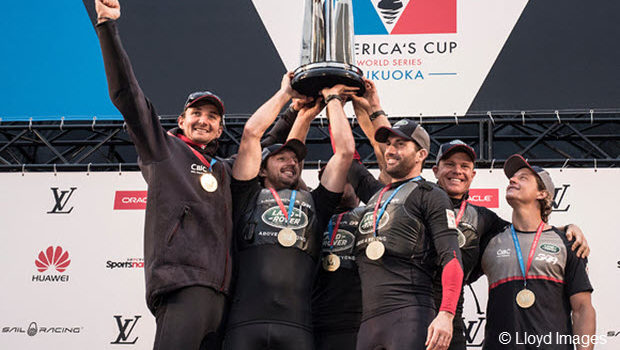


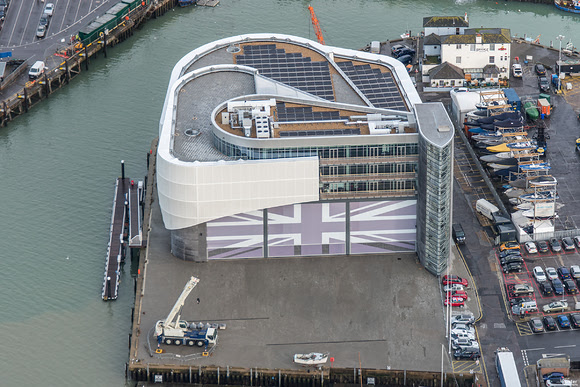
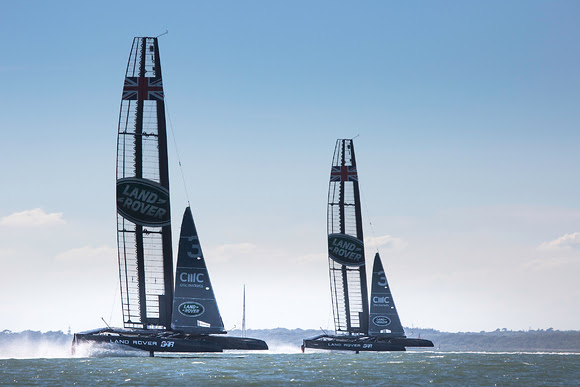

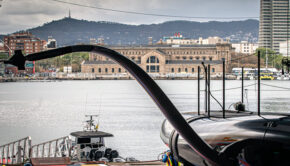
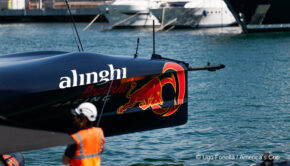
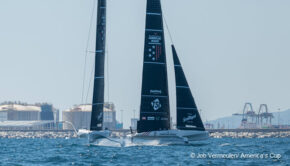

 We’ll keep your information safe.
We’ll keep your information safe.